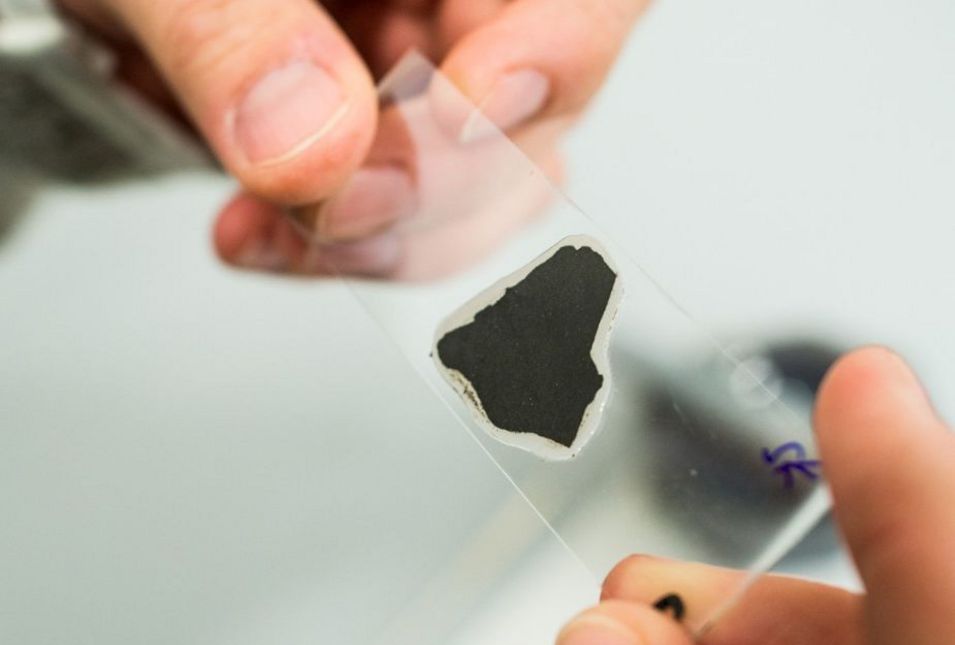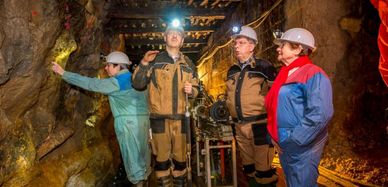German Centre for Energy Resources at Freiberg University
Researchers in Freiberg are developing the energy sources of the future. The German Centre for Energy Resources (DER) at Freiberg University of Mining and Technology is a unique research institution within Germany which works in partnership with the scientific and business worlds. Over many centuries, coal has been valued as a source of energy, but it is now about to find a new application as a raw material for the chemical industry. Hydrocarbons are the basis of many products, including fuel, paints, disinfectants, glues and even medicines. In theory, these hydrocarbons could be obtained from coal, which would be beneficial to the environment and the climate. The scientists in Freiberg are thus conducting research into the structure of coal down to its tiniest component parts.
Research at molecular level: understanding coal at the most fundamental level
Chemist Dr Marius Kroll leads the Mass Spectrometry working group at DER. His team carries out research in the Structural Analysis field, one of five research lines at DER. He says: “Coal is a mysterious substance that we have relied on as a valuable source of energy for centuries, but our understanding of its composition is still relatively basic.” Kroll and his team carry out their research with the aid of highly advanced equipment, including an ultra-high performance mass spectrometer – a 4.5-tonne giant magnet that exerts a pull 300,000 times stronger than the earth’s magnetic field. This measuring method is a unique innovation which was developed in Freiberg.
New examination methods are fast and environmentally friendly
“Researchers working at the University of Mining and Technology can draw on a wealth of knowledge that has been built up over many decades and are able to cover the entire value chain, from exploration to marketing. They are also used to taking an interdisciplinary approach to their work,” says DER deputy chairman Prof. Michael Nippa. This ability was leveraged to develop a new process for analysing coal which enables the elementary composition of coal to be examined. The conventional examination technique used to take several days and also involved large amounts of chemicals. “We can now do it in just a few minutes without using any chemicals at all,” says scientist Daniela Bauer.
Saxony: a world leader in innovative coal technologies
Saxony has become a world leader in the development of innovative coal technologies. The DER aims to maintain this position and ensure coal can be used in a variety of ways to meet the challenges of the future. In order to achieve this objective, the research institution successfully combines basic research with application-oriented research and also draws on the skills and experience of highly respected partners from the energy industry, including MIBRAG, Romonta, RWE and Vattenfall.
www.energierohstoffzentrum.com
pictures: Martin Förster

![[Translate to Englisch:] Chemiker Dr. Markus Kroll beim Auswerten von Untersuchungsergebnissen](/fileadmin/_processed_/b/1/csm_1_chemiker-dr.-marius-kroll-beim-auswerten-von-untersuchungsergebnissen_1200x800_e3a37a586f.jpg)
![[Translate to Englisch:] Glühbirne in Experimentiervorrichtung](/fileadmin/_processed_/f/d/csm_3_innovative-kohleanalytik-doppelpunkt-elektrothermische-verdampfung-die-mit-einem-atomemissions-spektrometer-gekoppelt-ist_1200x800_e8fab6a136.jpg)
![[Translate to Englisch:] Gerätschaft zum Experimentieren](/fileadmin/_processed_/b/2/csm_4_innovative-untersuchungsmethoden-am-der-in-freiberg_1200x800_0a29b8ae2f.jpg)
![[Translate to Englisch:] Ultra-Hochleistungs-Massespektrometer](/fileadmin/_processed_/5/b/csm_5_megastarke-anziehung.-das-magnetfeld-des-massespektrometers-zieht-die-bueroklammern-an_1200x800_696185f3a7.jpg)
![[Translate to Englisch:] Herstellung eines Kohlenstoff-Präparats](/fileadmin/_processed_/b/a/csm_6_praeparieren-gemahlener-kohle-fuer-messungen_1200x800_9e05e642ee.jpg)


